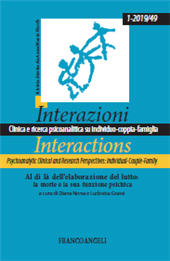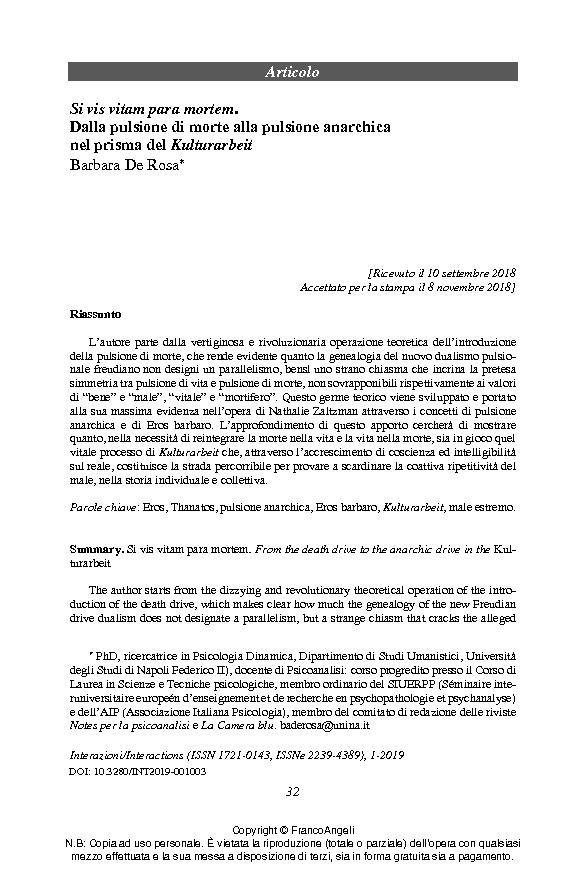Si vis vitam para mortem : dalla pulsione di morte alla pulsione anarchica nel prisma del Kulturarbeit
32-46 p.
L'autore parte dalla vertiginosa e rivoluzionaria operazione teoretica dell'introduzione della pulsione di morte, che rende evidente quanto la genealogia del nuovo dualismo pulsionale freudiano non designi un parallelismo, bensì uno strano chiasma che incrina la pretesa simmetria tra pulsione di vita e pulsione di morte, non sovrapponibili rispettivamente ai valori di "bene" e "male", "vitale" e "mortifero". Questo germe teorico viene sviluppato e portato alla sua massima evidenza nell'opera di Nathalie Zaltzman attraverso i concetti di pulsione anarchica e di Eros barbaro. L'approfondimento di questo apporto cercherà di mostrare quanto, nella necessità di reintegrare la morte nella vita e la vita nella morte, sia in gioco quel vitale processo di Kulturarbeit che, attraverso l'accrescimento di coscienza ed intelligibilità sul reale, costituisce la strada percorribile per provare a scardinare la coattiva ripetitività del male, nella storia individuale e collettiva. [Testo dell'editore].
The author starts from the dizzying and revolutionary theoretical operation of the intro-duction of the death drive, which makes clear how much the genealogy of the new Freudian drive dualism does not designate a parallelism, but a strange chiasm that cracks the alleged symmetry between the life drive and the death drive, not overlapping respectively to the values of "good" and "evil", "vital" and "deadly". This theoretical germ is developed and brought to its maximum evidence in the work of Nathalie Zaltzman through the concepts of anarchic drive and of barbaric Eros. The deepening of this contribution will try to show how, in the necessity of reintegrating death in life and life into death, the vital process of Kulturarbeit is at stake which, through the increase of conscience and intelligibility on reality, constitutes the path that can be followed by trying to undermine the coactive repetitiveness of evil, in individual and collective history. [Publisher's text].
Is part of
Interazioni : clinica e ricerca psicoanalitica su individuo-coppia-famiglia : 49, 1, 2019-
Articles from the same issue (available individually)
-
Information
ISSN: 2239-4389
KEYWORDS
- Eros, Thanatos, pulsione anarchica, Eros barbaro, Kulturarbeit, male estremo
- Eros, Thanatos, anarchic drive, barbaric Eros, Kulturarbeit, extreme evil



